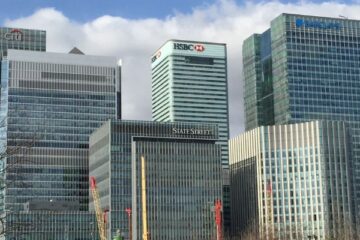Global Banks Navigate Choppy Waters
New York Community Bancorp’s Alarming Losses Reverberate
The global banking sector finds itself navigating turbulent waters once again, this time grappling with the aftershocks of renewed troubles in the commercial real estate sector. New York Community Bancorp (NYCB) took center stage as its shares plunged a staggering 38% after reporting a loss of $252 million for the last quarter. The regional lender’s move to set aside $552 million to absorb looming loan losses marked a significant uptick from the previous quarter’s $62 million. The primary driver behind this surge in provisions was the anticipation of losses on a loan tied to financing an office building.

DISCOVER THE GROW CREDIT MASTERCARD
This downturn in NYCB’s fortunes didn’t unfold in isolation. The KBW Regional Banking Index, influenced by this development, experienced a 6% nosedive on Wednesday, representing its most substantial single-day drop since May. This incident eerily echoed the banking crisis of last year, where California-based First Republic became the third US banking casualty. The index’s subsequent 4.8% dip on Thursday underscored the potential ripple effects across the banking landscape.
A Broader Global Impact
The reverberations extend far beyond US borders, with Japan’s Aozora Bank feeling the pinch. Aozora Bank attributed its projected annual loss of 28 billion yen ($190 million) to bad loans tied to US offices. Previously anticipating a net profit of 24 billion yen ($160 million), the stark reversal led to a share price plummet of over 21%. The bank expressed a cautious outlook, suggesting that it might take one or two more years for the US office market to stabilize, contingent on a return to in-person work and potential shifts in the Federal Reserve’s interest rate policies.
Europe, too, is not immune to the escalating losses in the commercial real estate sector. Julius Baer, a Swiss private bank and wealth manager, reported a staggering 55% decline in adjusted profits for the last year. The substantial setback was attributed to a loss of 586 million Swiss francs ($680 million) on loans extended to a single “European conglomerate.” The fallout was significant enough to prompt the departure of Julius Baer’s CEO, Philipp Rickenbacher, adding a leadership dimension to the challenges posed by the troubled loans.
Preemptive Measures by Deutsche Bank and the Lingering Concerns
Germany’s banking giant, Deutsche Bank, took preemptive measures by allocating €123 million ($133 million) in the last quarter to absorb potential defaults on its US commercial real estate loans. This marked a substantial fourfold increase from the same period in the previous year. The move underscores the cautious stance adopted by major financial institutions amid the uncertainties surrounding the commercial property sector.
As analysts and industry observers assess the unfolding scenario, comparisons to the banking crisis of last year are inevitable. NYCB’s struggles are attributed in part to its acquisition of $13 billion worth of loans from the now-failed Signature Bank, a casualty from the previous year’s crisis. While well-capitalized banks may currently project resilience, the underlying concern is the potential for a ripple effect, reminiscent of the small disturbances that snowballed into a crisis in the recent past.

Vigilance Amid Market Resilience
The banking landscape’s resilience, as reflected in the KBW Bank Index’s 29% uptick since its low last May, should not breed complacency. Industry experts, such as Philip Lawlor, managing director of markets research at Wilshire Indexes, caution against underestimating the potential impact of seemingly isolated incidents. Last year’s bank runs began with what Lawlor calls “small ripples that just built and built.” While global banking indexes show signs of recovery, the ongoing commercial real estate turmoil demands vigilance.
In conclusion, the recent challenges faced by New York Community Bancorp, coupled with global counterparts like Aozora Bank and Julius Baer, highlight the fragility of the banking sector in the face of commercial real estate uncertainties. As major players like Deutsche Bank take proactive measures, the industry remains on alert, acknowledging that even small disruptions have the potential to cascade into more significant challenges. The current landscape serves as a stark reminder that, despite apparent stability, the banking sector continues to navigate unpredictable waters.
See also: Meta’s Robust Performance: Profits Soar, Stock Surges



